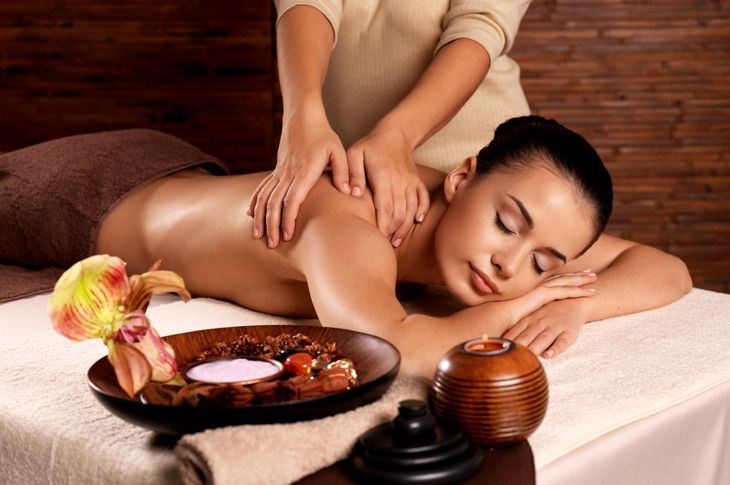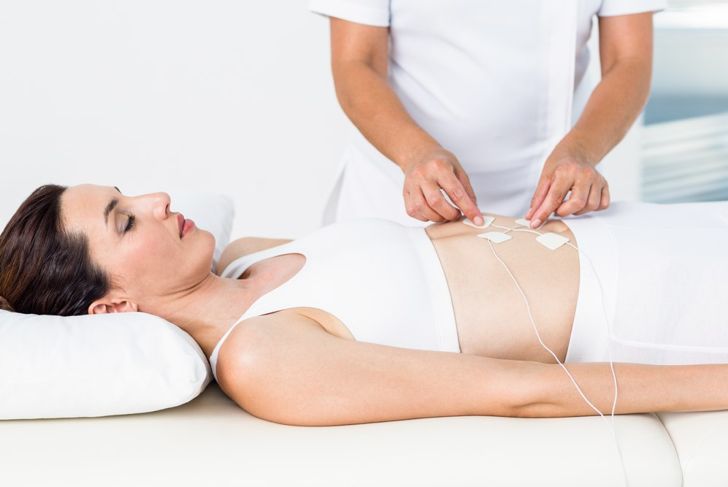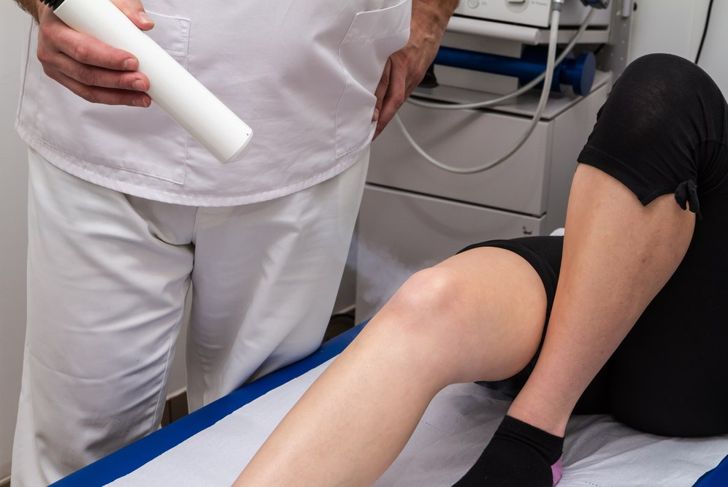Tendinitis causes inflammation, irritation, or tearing of the thick, fibrous tissues that connect muscle to bone. This usually occurs due to heavy exertion of isolated muscle groups, whether due to sports or repetitive motion. Characterized by pain and stiffness, tendinitis also causes swelling or lumps and restricted movement in the injured tendon. Treatment typically aims at relieving pain, reducing inflammation, and restoring range of motion and strength.
Painkillers
When pain and inflammation are mild or moderate, doctors may prescribe painkillers or recommend over-the-counter options. Non-steroidal anti-inflammatory drugs or NSAIDs are a standard choice. Topical creams and sprays with anti-inflammatory properties also provide relief, especially among those prone to the side effects of even mild painkillers. People for whom these treatments prove useful may not require additional methods beyond resting the injured area. In some cases, however, the patient may require stronger medication or therapies.
Corticosteroids
If over-the-counter painkillers do not relieve symptoms, a doctor may prescribe corticosteroids, which are injected into the area around the distressed tendon to reduce inflammation and provide quick relief. Though effective, medical professionals do not recommend them to people with chronic tendinitis since recurrent injections may weaken the tendon and increase the risk of rupture. It is also essential the patient avoid reinjury after recovery because tendon injuries become more intense and problematic with each injury.
RICE Program
For minor tendinitis, following the acronym “RICE” could be sufficient. RICE stands for rest, ice, compression, and elevation. Rest entails avoiding strain or exertion of the injured area. Icing the area can help ease inflammation, while compression can prevent excess swelling. Finally, elevating the area when seated can further prevent swelling and promote healing. If, after following RICE for a week, an individual has not improved, he or she should see a doctor for further treatment.
PRP Therapy
A recently popularized treatment, PRP therapy or platelet-rich plasma therapy removes the patient’s own blood, spins it in a centrifuge to concentrate the healing platelets, then reinjects it into the affected tendon. This injection may help reduce inflammation and speed up tissue healing. Since this treatment is relatively new, its degree of effectiveness is unknown. If the research bears out, doctors hope to use it as an alternative to potentially dangerous corticosteroids, which causes adverse effects in some patients.
Surgery
Severe and debilitating tendinitis injuries sometimes require surgery for complete recovery. When a tendon tears away from the bone, an individual has too much scar tissue, or a recurring issue develops, doctors often recommend this treatment. Some doctors use non-invasive surgery techniques involving ultrasound guidance and small instruments that lower the risks, but these options are not always available or suitable.
Lifestyle Changes
Implementing lifestyle changes is an important part of tendinitis treatment and recovery. Anyone with previous tendon injuries should take care when performing activities that caused the injury. This includes stretching prior to and following exercise and wearing necessary protective equipment and proper footwear. Even ensuring healthful amounts of proteins, vitamins, and minerals in one’s diet can help prevent reinjury. Finally, seek medical attention as soon as the problem area begins hurting again.
Acupuncture
Acupuncture therapy aims at improving blood circulation, especially in the affected tendon. The insertion of thin needles into specific locations along the body prompts the production of endorphins, the body’s natural painkillers. This production may improve pain all over the body. People who prefer more natural remedies often recommend this treatment because it can ease the pain in some people without medication. A small study showed that acupuncture was effective for short-term relief of tennis elbow, a type of tendinitis, but larger studies are needed to confirm these findings. Ideally, find an acupuncturist who specializes in this type of treatment.
Massage Therapy
Massage therapy can reduce pain and promote blood flow. The muscle and connective tissue manipulation can help relieve tension and inflammation from affected areas. Many athletes with chronic tendinitis rely on massage therapy. When seeking this treatment to alleviate tendinitis or other tendon pain or injury, find a massage therapist with training in this specific field.
Electrotherapy
Electrotherapy treats tendinitis by sending electrical signals to the affected tendons. The goal is to increase blood flow and reduce inflammation and pain. This treatment works best in combination with physiotherapy or cryotherapy, and it can be effective for both acute and chronic tendinitis.
Cryotherapy
Cryotherapy is the application of cold to an injured tendon. This process can help reduce pain and improve range of motion, but it works best when used in conjunction with therapies such as electrotherapy, physiotherapy, and massage. A doctor or other medical professional can recommend the best treatment plan for a patient’s unique situation.

 Home
Home Health
Health Diet & Nutrition
Diet & Nutrition Living Well
Living Well More
More




















